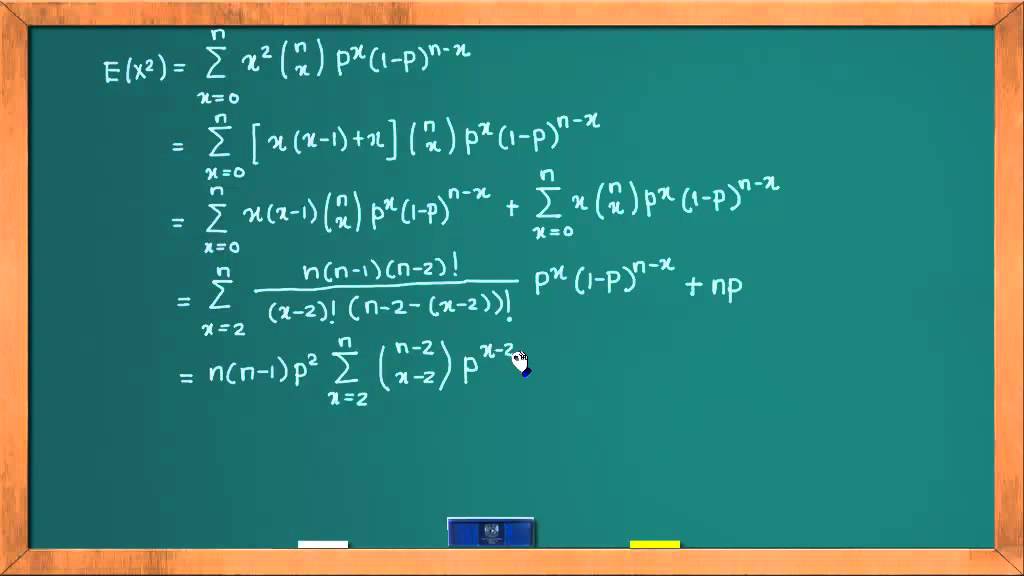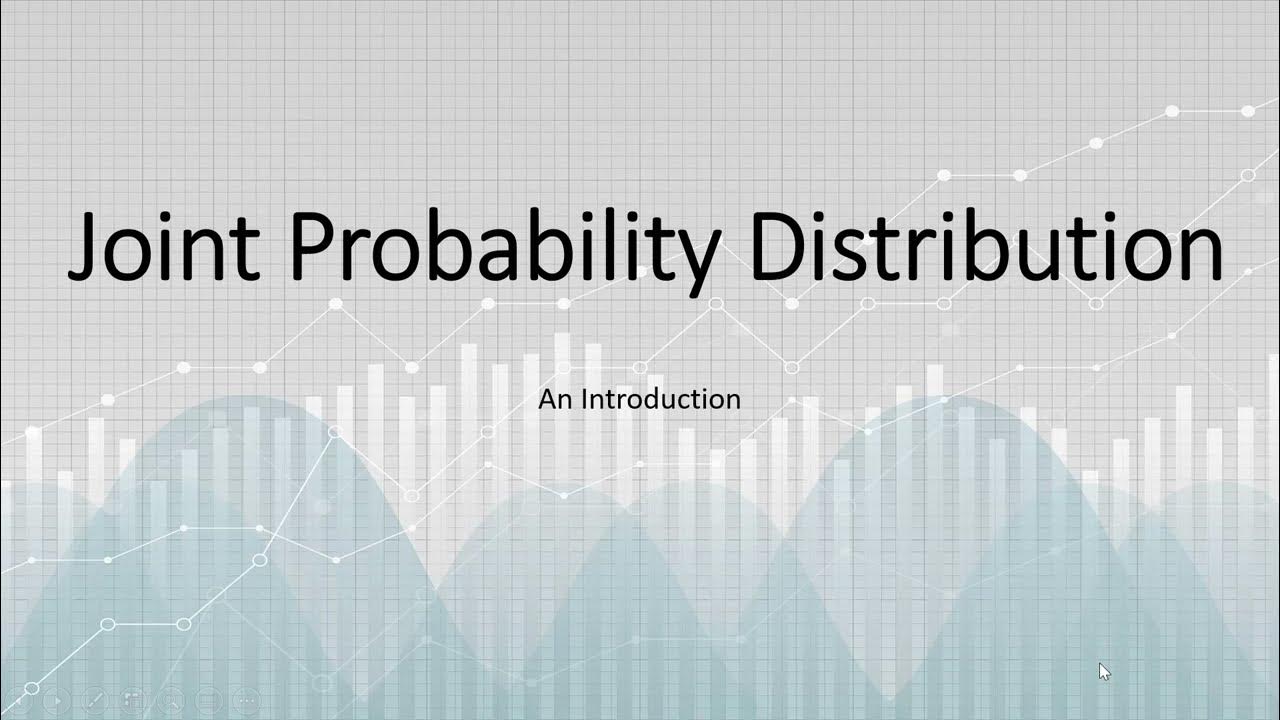Probability - Joint Probability & Double Integral
Summary
TLDRIn this video, the presenter explains how to use double integrals to calculate the probability of a joint probability distribution involving two random variables, X and Y. By first determining the constant C through integration, the presenter shows how to set up the double integral, including identifying the proper limits based on the region of integration. The video also covers solving a specific probability problem where X > 2 and Y < 3, demonstrating the process of adjusting integration limits and changing the order of integration for simplification. Throughout, the presenter provides clear visual explanations to aid in understanding the mathematical concepts.
Takeaways
- 📘 The video explains how to use double integrals to find probabilities in a joint probability distribution involving two random variables, X and Y.
- 🧮 The joint probability density function (PDF) is denoted as f(x, y) = C(x + y), where C is a constant to be determined.
- 🔢 To find the constant C, the property of the joint PDF is used: the double integral of f(x, y) over the entire valid region must equal 1.
- 🧭 The region of interest is defined by 0 ≤ x ≤ y ≤ 4, meaning X is always less than or equal to Y and both variables range between 0 and 4.
- 🖊️ The video emphasizes the importance of drawing the region on an x–y graph to clearly determine the upper and lower limits for integration.
- 📈 When integrating with respect to X first, the inner integral limits are from x = 0 to x = y, and the outer integral limits for Y are from 0 to 4.
- ✅ Solving the normalization integral gives 32C = 1, which means the constant C equals 1/32.
- 📊 To find specific probabilities, such as P(X < 2, Y < 3), the same double integral method is used but restricted to the new region defined by these inequalities.
- 🔄 The order of integration can be changed (integrate with respect to Y first instead of X) to simplify the calculation when the region’s boundaries are more easily described that way.
- 🧠 The key challenge lies in identifying the correct integration limits based on the shaded region in the graph rather than in performing the actual integration.
- 🎓 The video concludes by reminding viewers that mastering how to find upper and lower limits in a double integral is essential for solving joint probability problems.
Q & A
What is the main topic discussed in the video?
-The video explains how to use double integrals to calculate probabilities from a joint probability density function (PDF) involving two random variables.
What is a joint probability distribution?
-A joint probability distribution describes the likelihood of two random variables occurring together, represented by a function f(x, y) that defines probabilities over a two-dimensional region.
What is the first step when working with a joint probability density function (PDF)?
-The first step is to determine the constant C by using the property that the total integral of the PDF over its entire valid region equals 1.
How is the region of integration defined in the example?
-The region is defined by 0 ≤ y ≤ 4 and 0 ≤ x ≤ y, meaning x is always smaller than or equal to y within the range from 0 to 4.
Why is drawing a graph of the region important?
-Drawing a graph helps visualize the integration boundaries, making it easier to identify the correct upper and lower limits for x and y in the double integral.
How are the upper and lower limits determined for the inner integral with respect to x?
-For the inner integral (in x), the limits are found by drawing lines parallel to the x-axis. The lower limit is x = 0 and the upper limit is x = y.
What are the outer limits for y in the first double integral setup?
-The outer limits for y are numerical values, with the lower limit being 0 and the upper limit being 4, as y ranges between these two values.
What is the computed value of the constant C in the example?
-After integrating, the total integral equals 32C = 1, which gives C = 1/32.
How is the probability P(X < 2, Y < 3) calculated using the double integral?
-It is calculated by integrating the joint PDF f(x, y) = C(x + y) over the region where x < 2, y < 3, and x < y, with proper limits determined from the graph.
Why does the speaker change the order of integration in the second problem?
-The order is changed to simplify the limits, avoiding the need to split the integral into multiple parts due to changing boundary conditions.
What are the final limits of integration after changing the order for the probability P(X < 2, Y < 3)?
-After switching the integration order, y varies from y = x to y = 3, and x varies from 0 to 2.
What is the general definition of the probability for two random variables using a joint PDF?
-The probability that (X, Y) lies within a specific region R is given by the double integral ∬_R f(x, y) dx dy, where f(x, y) is the joint PDF.
What is the key takeaway from the video about double integrals and probability?
-Double integrals can be used to compute probabilities involving two continuous random variables, with correct limits determined by the region of interest.
Outlines

Dieser Bereich ist nur für Premium-Benutzer verfügbar. Bitte führen Sie ein Upgrade durch, um auf diesen Abschnitt zuzugreifen.
Upgrade durchführenMindmap

Dieser Bereich ist nur für Premium-Benutzer verfügbar. Bitte führen Sie ein Upgrade durch, um auf diesen Abschnitt zuzugreifen.
Upgrade durchführenKeywords

Dieser Bereich ist nur für Premium-Benutzer verfügbar. Bitte führen Sie ein Upgrade durch, um auf diesen Abschnitt zuzugreifen.
Upgrade durchführenHighlights

Dieser Bereich ist nur für Premium-Benutzer verfügbar. Bitte führen Sie ein Upgrade durch, um auf diesen Abschnitt zuzugreifen.
Upgrade durchführenTranscripts

Dieser Bereich ist nur für Premium-Benutzer verfügbar. Bitte führen Sie ein Upgrade durch, um auf diesen Abschnitt zuzugreifen.
Upgrade durchführen5.0 / 5 (0 votes)






